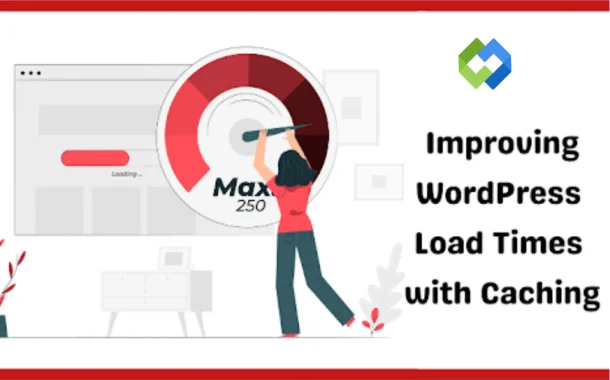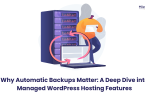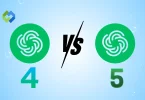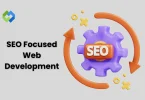As such, several blogs have attempted to analyze the meaning of caching, WordPress hosting plans’ importance, and the wide range of applications available for WordPress users.
Table of Contents
Table of Contents
What Is Caching?
Any application that is frequently accessed makes use of a cache, an intermediary storage to make such requests faster to fulfill. In a nutshell, a cache is used to avoid fetching a particular file from the server or a database.
Instead, as a middleman, caching helps to fetch the content that had been generated in the past, thereby cutting down the time required for the loading of the website and also reduces the server load. Thus, caching is essential to improve the WordPress load time and website’s performance rates.
Benefits of Caching for WordPress
Given below are the best benefits of caching for all the WordPress hosting users:
- Improved Load Time: For cached pages, load times are quicker as a result of backend processes or database calls that don’t take much time.
- Enhanced Experience: With reduced loading time, users are less likely to abandon a website; hence, caching is highly utilized to assist in achieving low bounce rates, eventually leading to higher engagement on your WordPress websites.
- Improved SEO: Search engine ranking parameters favor pages that have less loading time, hence improving their ranking.
- Server Optimization: Caching works as a resource economizer as it ensures no more than the required aspects are used, thereby preventing the server from breaking down due to excessive traffic, especially important for high-traffic or enterprise WordPress hosting environments.
- Reduced Hosting: Mounting costs of maintenance and repair as a result of demanding resource optimization are significantly lowered owing to less consumption of server resources.
Types of Caching
- Browser Caching:
- All static files (CSS, Javascript, images) are kept in the client’s browser.
- First-time loading times are always optimized, whereby repeat loading of the same page of the website does not take too long.
- Implementation of this is done through headers in HTTP like Cache-Control.
- Page Caching
- This strategy is aimed at preventing repeated database requests by storing complete HTML pages for every single visitor.
- It works best on websites that are essentially “frozen” in terms of their content.
- Object Caching
- Caches the database queries such that the content being requested gets created faster.
- Redis or Memcached are very popular solutions for object caches.
- Opcode Caching
- With Opcode Caching, the number of times the server has to execute the same PHP script gets reduced, thereby decreasing the processing time.
- Two of the most widely used ones are APCu and Zend OPcache.
Tools for Caching in WordPress
Caching Plugins
- WP-Rocket: Easy to use and powerful, with features for page cache, Gzip compression, and database optimization.
- W3 Total Cache: A more complete solution that replaces the need for various caching plugins and includes page cache, object cache, and browser cache.
- LiteSpeed Cache: Best fits LiteSpeed servers; offers lots of optimization options.
Content Delivery Networks (CDNs)
- First of all, CDNs can be described as worldwide networks of proxy servers that speed up the loading time of static assets such as images or stylesheets.
- The topmost CDNs include Cloudflare, KeyCDN, and StackPath.
Server-Side Caching
- Many server hosts, such as MilesWeb, offer native, server-side optimizations specifically designed for WordPress.
- These include NGINX or Varnish caching techniques aimed at increasing the throughput.
Implementing Caching for WordPress
- Install a WordPress Caching Plugin
Selecting a plug-in should be determined by the needs of your website.
You can set up page caching, minifying HTML, and Gzip compression in the subsequent settings.
- Set Browser Caching
Put caching headers using a plugin or by adding rules to the .htaccess file.
- Set up a CDN
Use a CDN to lessen the load on the server and distribute content all over the globe.
- Improve Database Queries
Employ an object cache to ease the interaction with the database for dynamic content.
- Try Combining Caching with Optimization
For more speed increase, compress images and minify CSS/JS as well as enable lazy load.
Additional Tips To Remember For WordPress Caching
- Exceed Caching on Dynamic Content
Dashboards, checkouts, or other dynamic pages should not be cached, especially if there are exclusion rules for these pages.
- Never Implement Cache Expiry
Put in place cache expiry times to make sure that fresh content is delivered on request.
- Conduct tests
Conduct tests on your website after putting up caches to ensure that the functions of the website have not been distorted.
- Managing and Overseeing
Utilize Google PageSpeed Insights, GTmetrix, or Pingdom to track your website’s performance.
After changes have been made, delete caches to allow these changes to be shown.
Every so often, update your caching plugins so that you enjoy new features and updated security settings.
Concluding Remarks
The website load time of WordPress can be dramatically improved through caching, which directly affects the performance of the system and the ease of use it presents.
Basically, through the use of caching plugins, CDNs, and server-side solutions, you can reduce the page load time and improve the user experience on the targeted pages.
In case you are looking for optimized WordPress hosting with such capabilities, consider MilesWeb as your WordPress hosting provider, who will make sure that your website performs well. So let’s embrace caching and see our websites loaded and engaged in no time!














